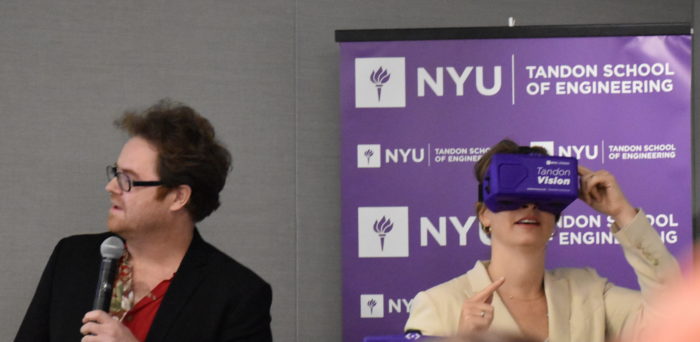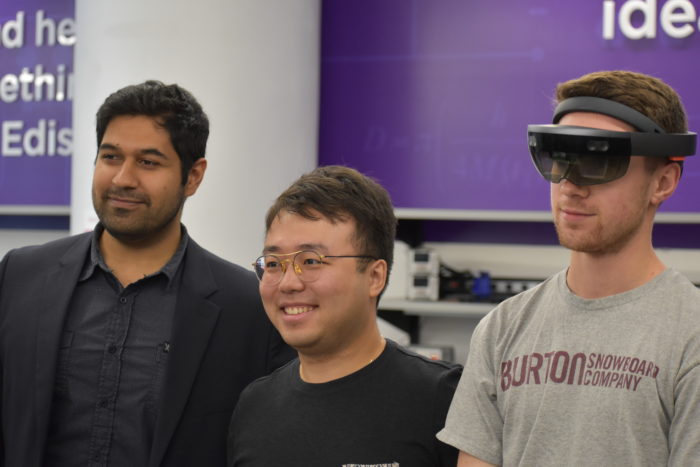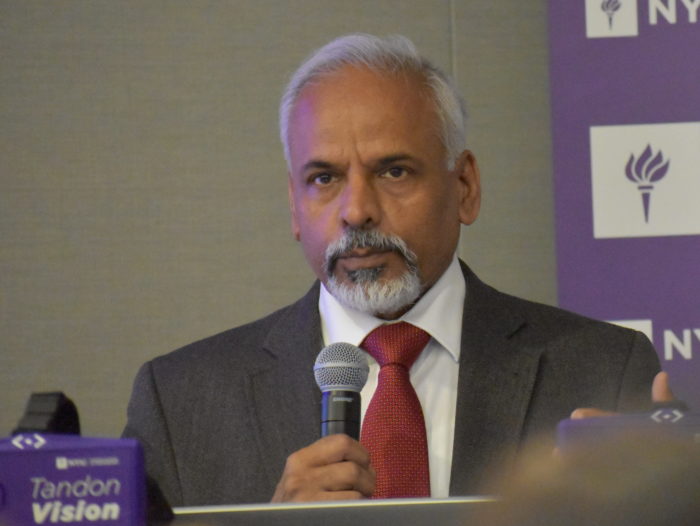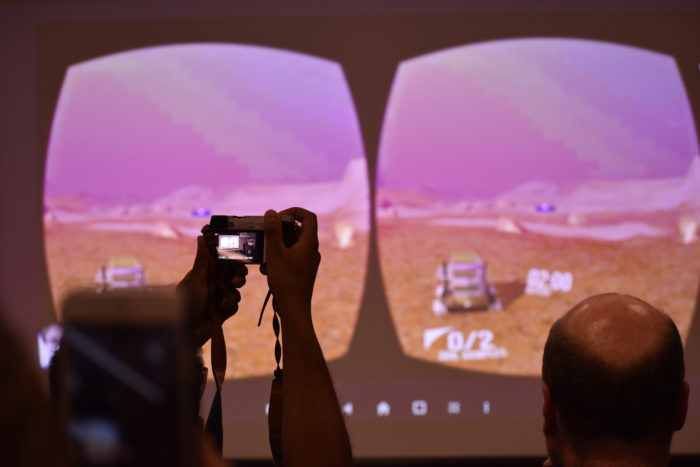Eric Baerenrodt, a junior at the NYU Tandon School of Engineering, is on the cutting edge of technology. Literally. He’s working as an intern with a 3-D visualization startup called MediVis, which enables student surgeons to explore the inner structures of the human body. “It’s a new tool for prospective surgeons to hone their skills before they go into the OR,” said Baerenrodt. Sounds like an advancement that patients could get behind.
Baerenrodt was on hand with executives of MediVis on Tuesday at the Tandon School in Brooklyn for the announcement of a major new tech venture. New York City and school officials unveiled a plan to create a state-of-the-art hub for virtual reality and augmented reality (VR/AR), which they described as the first of its kind in the U.S. The city plans to invest $6 million in the hub, which will be operated by Tandon at the Brooklyn Navy Yard with a workforce development center situated at CUNY’s Lehman College in the Bronx.

Deputy mayor Alicia Glen goes on a virtual trip to Mars, with a guide from Mark Skwarek, director of the NYU Tandon Mobile AR Lab
A parade of officials lauded the VR/AR venture, which evidently took a village to launch. “To get this off the ground is really spectacular. This is the coolest thing happening in technology right now. It’s really catching fire,” said Alicia Glen, deputy mayor for housing and economic development. “The applications of this are endless and really exciting.” Glen emphasized that the city expects concrete results from its investment: jobs and tax-paying new companies. Mayor de Blasio’s administration predicts the new lab will directly create 500 new jobs in the next decade, a contribution to the mayor’s New York Works plan to create 100,000 jobs.
A sense of spirited rivalry with the West Coast filled the room as the officials described a systematic approach to getting out front of the competition in VR/AR. The lab’s mandate is to support new ventures, attract and develop talent, do research, build a VR/AR community, and spur corporate innovation in the field. The hub will “position New York City as a world leader and premier destination” for VR/AR development, said Julie Menin, commissioner of the Mayor’s Office of Media and Entertainment. City council member Dan Garodnick, chair of the committee on economic development, spoke of “going head-to-head with Silicon Valley.” He cited an estimate of the market for the new software as $80 billion by 2025. “This technology is going to be central to the way we live our lives,” he said. “We will soon be buying VR apps the way we buy apps for our smartphones.”

The MediVis team on hand to demonstrate their medical visualization product: from left, co-founder Osamah Choudhry, M.D.; engineer Wenbo Lan; and NYU student intern Eric Baerenrodt
The technology is already moving from being a curiosity to an important tool for business. In the real-estate industry, for example, technology is being developed to enable customers to look at prospective renovations or apartments for sale by donning headsets rather than poring over blueprints or running around town. VR/AR could be used to teach people how to drive, or how to follow their doctor’s instructions for physical therapy, said Garodnick. New York City is a center for several industries where such technology could be readily applied: health care, entertainment, education, insurance, building construction.

NYU Tandon dean Katepalli Sreenivasan
The competition to win the city’s backing for a VR/AR hub was spirited, said James Patchett, CEO of the NYC Economic Development Corp. The city considered more than 15 proposals before awarding the investment to the Tandon/Lehman partnership. Thanks in part to the new venture, he said, “we’re going to be the city that wins.”
While Patchett didn’t elaborate on why the Brooklyn/Bronx team got the nod, the NYU campus has an obvious commitment to the technology. “Our students and faculty are already immersed in projects that range from 3-D brain scans to smart buildings and the first real-time VR for large audiences. This lab will accelerate such research,” stated NYU Tandon dean Katepalli Sreenivasan. When new students are accepted by the school, one of the items in the welcome kit is a Google Cardboard headset they can use with their smartphones to sample two VR programs developed at Tandon: a trip to Mars and a tour of cellular development inside the human body, admissions officials said.
The Tandon School is becoming a physically more imposing presence in Brooklyn as well, adding to the borough’s rise as a tech hub. NYU is investing more than $500 million in new facilities and programs at the downtown campus. When it opens for classes this fall, the showcase building will be the refurbished former MTA headquarters at 370 Jay St., where the school will occupy four floors and almost double its downtown space.

The audience at the announcement got a sense of NYU’s virtual trip to Mars on the big screen
Students and entrepreneurs demonstrating their projects at the event Tuesday showed that the technology is going where no one has gone before. A startup called Holojam makes a software platform for multi-member VR experiences. Holojam engineers demonstrated a prototype game called Photon Defender, a game in which two players wearing headsets and backpacks defend a space station from incoming asteroids. Beyond the gaming world, we should be prepared to see people wearing headsets and making mysterious gestures as a routine part of life. Baerenrodt, the intern with MediVis, said that student surgeons could be practicing their operations practically wherever they go. “You can do it on the bus ride home,” he said, “or in your own living room.”